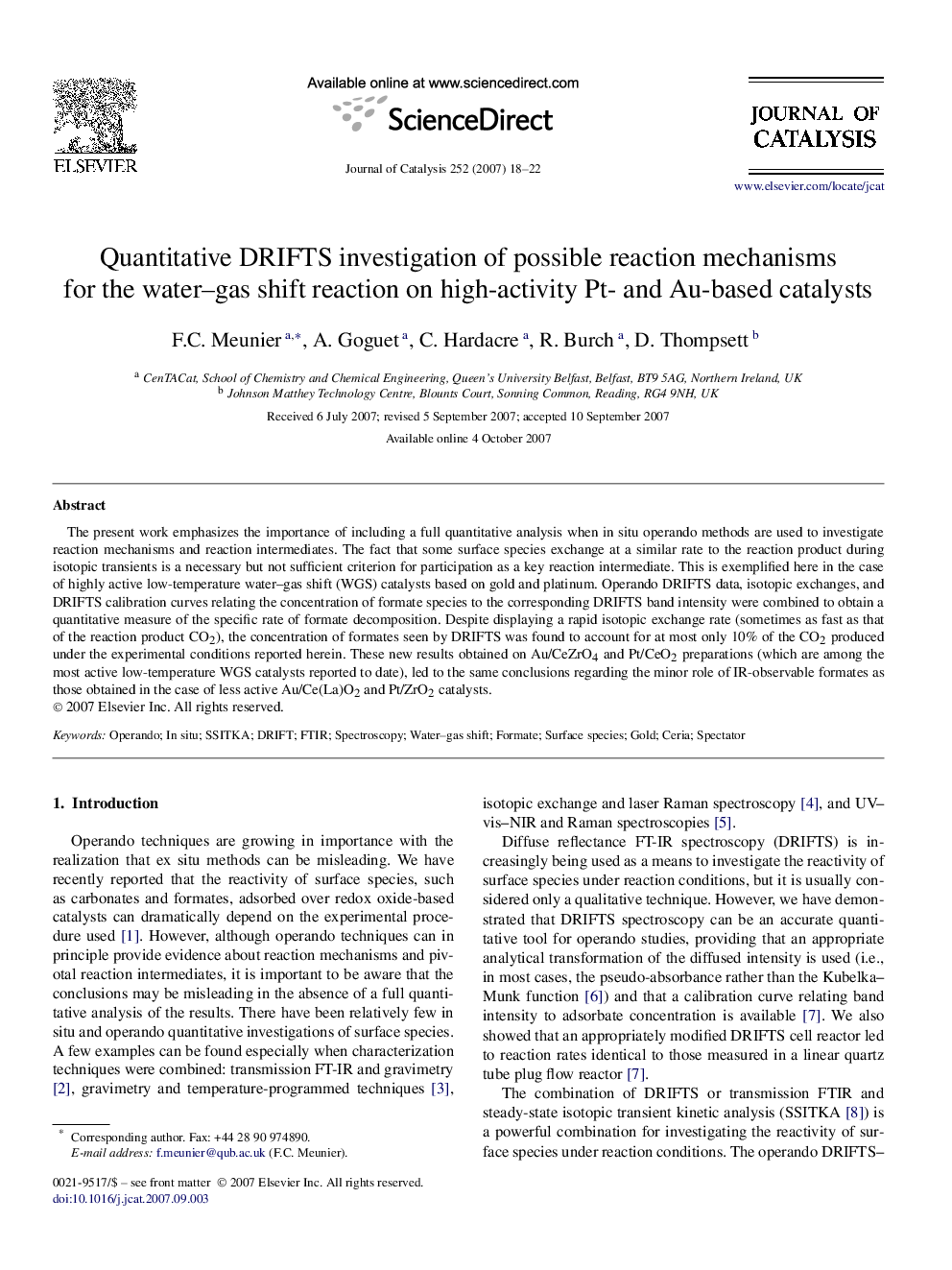| Article ID | Journal | Published Year | Pages | File Type |
|---|---|---|---|---|
| 62629 | Journal of Catalysis | 2007 | 5 Pages |
The present work emphasizes the importance of including a full quantitative analysis when in situ operando methods are used to investigate reaction mechanisms and reaction intermediates. The fact that some surface species exchange at a similar rate to the reaction product during isotopic transients is a necessary but not sufficient criterion for participation as a key reaction intermediate. This is exemplified here in the case of highly active low-temperature water–gas shift (WGS) catalysts based on gold and platinum. Operando DRIFTS data, isotopic exchanges, and DRIFTS calibration curves relating the concentration of formate species to the corresponding DRIFTS band intensity were combined to obtain a quantitative measure of the specific rate of formate decomposition. Despite displaying a rapid isotopic exchange rate (sometimes as fast as that of the reaction product CO2), the concentration of formates seen by DRIFTS was found to account for at most only 10% of the CO2 produced under the experimental conditions reported herein. These new results obtained on Au/CeZrO4 and Pt/CeO2 preparations (which are among the most active low-temperature WGS catalysts reported to date), led to the same conclusions regarding the minor role of IR-observable formates as those obtained in the case of less active Au/Ce(La)O2 and Pt/ZrO2 catalysts.
